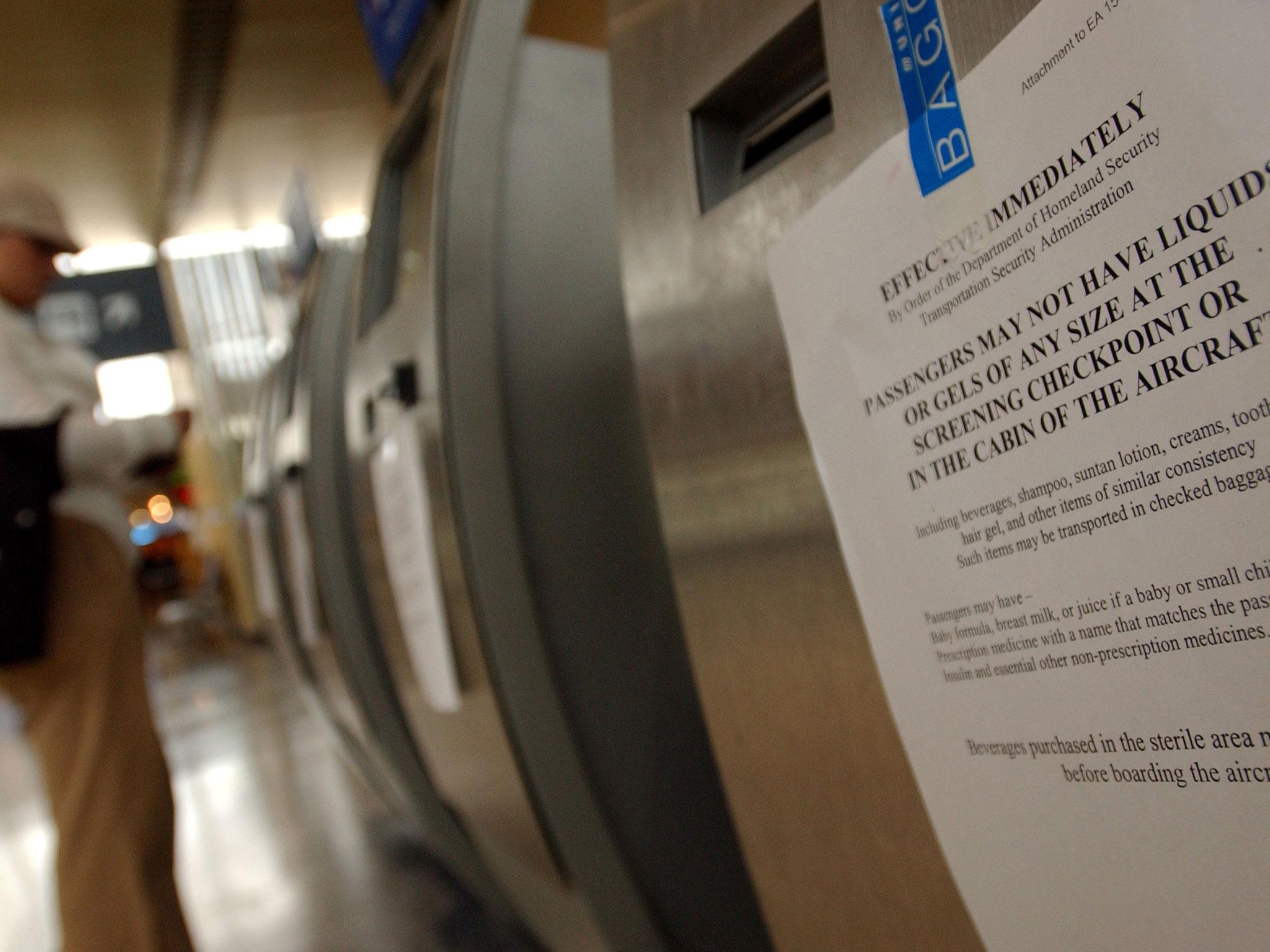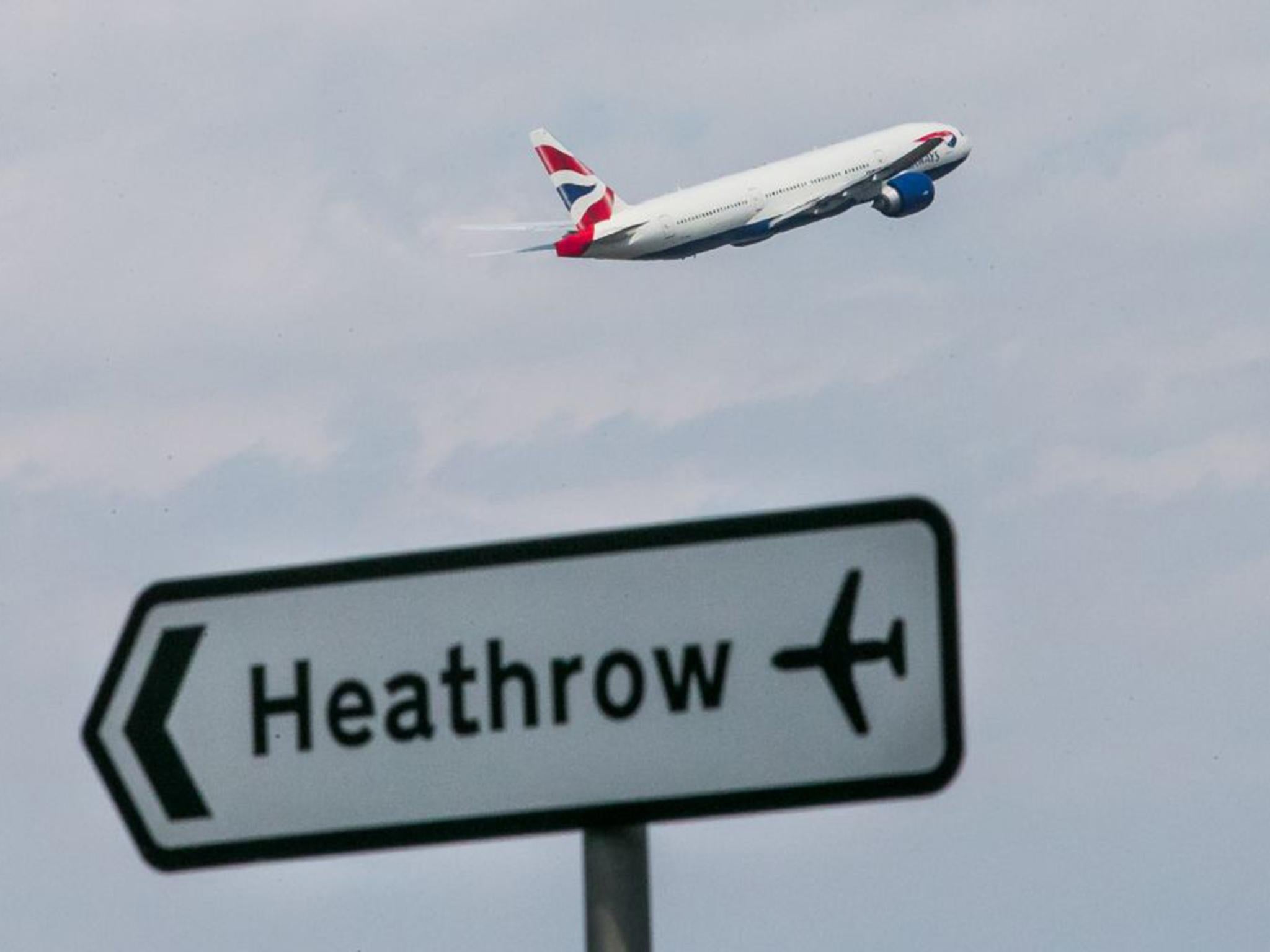It's the 10th anniversary of the liquids ban on flights - but is it still necessary?
A decade on from the ‘Liquid Bomb Plot’ that ratcheted up airline security, Simon Calder asks if it still has to be this way

Ten years ago, the aviation industry - and long-suffering passengers - awoke to find the security rules for passengers had changed, literally overnight.
The Government announced that it had uncovered what was described as a terror plot to blow up transatlantic jets from Heathrow to North America, intended to kill even more people than 9/11.
The plan for the “Liquid Bomb Plot” was to take the ingredients for an improvised explosive device onto each aircraft and assemble the bomb on board before detonating it and blowing the plane out of the sky. The explosive, derived from hydrogen peroxide, was to be disguised in bottles of soft drinks. The perpetrators were later jailed for conspiracy to murder, though there is still debate about how far advanced the plot actually was.
Shortly before dawn on 10 August 2006, the top executives of Britain's airlines were telephoned to be told their passengers would be banned from carrying anything more than a purse or wallet into an aircraft cabin. Even pens were banned from transatlantic flights, on the grounds that the ink they contained was a liquid. One concession was made, for nursing mothers: they could take milk for their baby through the checkpoint, but only if they tasted it first to demonstrate it was the real thing.
Predictably, the strict new rules immediately brought Heathrow airport almost to a standstill, and traumatised the flight network elsewhere in Britain.
Baggage systems simply could not cope with two or three times the normal number of items. Even mobile phones had to be checked in, and many went missing. At one stage, Paris- and Brussels-bound travellers who could not bear to be parted from their phones were switching to Eurostar trains at the rate of 10 a minute. In the ensuing week, British Airways alone cancelled over 1,500 flights. What should have been a very profitable week for Britain's airlines ended up costing them around £50m.
What to do next became an international issue. Three months later, the near-total ban was eased; smaller items were allowed through, but there were new and draconian rules on liquids, aerosols and gels (LAGs, in the terminology).
The European Commission acknowledges: “This ban was envisaged as a temporary restriction to be lifted when suitable technology to screen liquids for explosives became readily available.” Yet the rules persist to this day, with everything from sunscreen to soft cheese ending up in the bins at security.
Malcolm Ginsberg, Editor in Chief of Business Travel News, says: “One just becomes acclimatised to a world where passing through an airport is plain hard going. Why the 100ml maximum size for liquids? Who knows? Is it a secret plan by airports to ensure maximum duty-free sales? When is this ‘temporary’ restriction going to be lifted? It was supposed to be 18 months ago.”

Progress on improving airport technology has been painfully slow. Even a very modest relaxation of the rules - to allow airport purchases of drinks to be taken through checkpoints in a sealed “security tamper-evident bag” (“STEB”, in the parlance) - was much delayed in its implementation. The concession also highlighted the problem with any change to security rules: anything that is done on a regional basis triggers confusion and uncertainty in the travelling public. Many passengers are still being caught out - and losing their expensive airport purchases - because they were bought at an airport outside the permitted zone.
One possible solution is to move duty-free sales to arrival airports, which would also cut down on the amount of drink that is flown around the world unnecessarily. The practice already exists in Iceland, Norway and Australia.
But duty-free goods are only one dimension of a much wider problem, which the global airlines’ association, IATA, describes as “no longer sustainable”.
Tony Tyler, the outgoing Director-General of IATA, says: “Managing security will become increasingly challenging as more of us travel each year. Long queues, intrusive checks and inconsistent procedures create natural frustrations.” His organisation, along with Airports Council International, is working on a project called Smart Security. It envisages that techniques imported from medicine - of computed tomography (CT) and X-ray diffraction (XRD) - should allow liquids to be left in passengers’ bags during the screening process.
America’s hard-pressed Transportation Security Administration (TSA), under pressure this summer to reduce the length of queues at checkpoints at US airports, is enthusiastic about slicker screening:
“TSA is interested in exploring the capabilities of CT-based solutions… in the checkpoint environment to screen for explosives, weapons, and contraband at a significant unit cost reduction. "
The aim of Smart Security is that, ultimately, the “walk through metal detectors” and security pat-down of many passengers should be eliminated. Technology will assess material threats more effectively than humans watching screens. The passenger should be able to walk unchallenged along a corridor flanked by detectors, barely aware that he or she is being checked.
Checkpoints will still be staffed, but security personnel will be freed up to do what people do best, which is to study the behaviour of passengers and identify “persons of interest” for further investigation.
The problem is how long it will take. The ideas currently being studied by the TSA were first mooted in a US Congress paper seven years ago, which indicates the glacial rate of progress. One target date mooted by IATA, 2020, looks unachievable.
The chosen equipment will need to be tested at public venues such as sports stadiums and entertainment arenas before it is deployed at airports worldwide. But if it proves successful, then the limits on the quantities of liquids should be eased or even abolished - taking the aviation world back to the way it was up to 9 August 2006.
Department for Transport rules on liquids, aerosols and gels in cabin baggage
* Containers must hold no more than 100ml
* Containers must be in a single, transparent, resealable plastic bag, which holds no more than a litre and measures approximately 20cm x 20cm
* Contents must fit comfortably inside the bag so it can be sealed
* The bag must not be knotted or tied at the top
* You’re limited to one plastic bag per person
* You must show the bag at the airport security point
Join our commenting forum
Join thought-provoking conversations, follow other Independent readers and see their replies
Comments